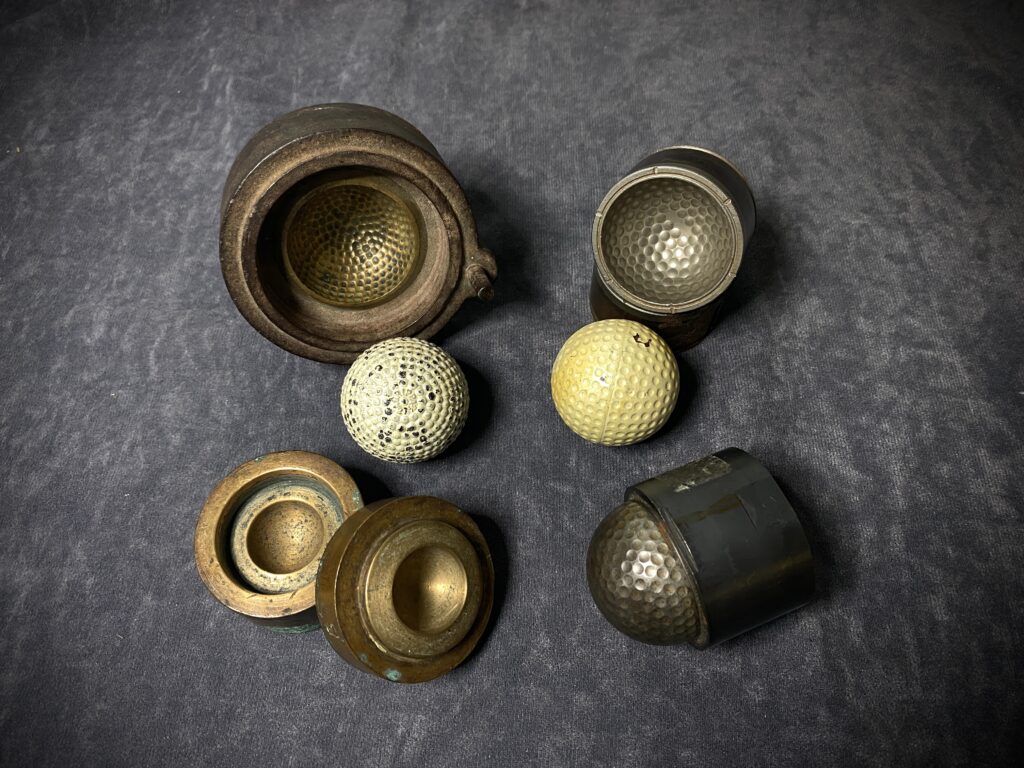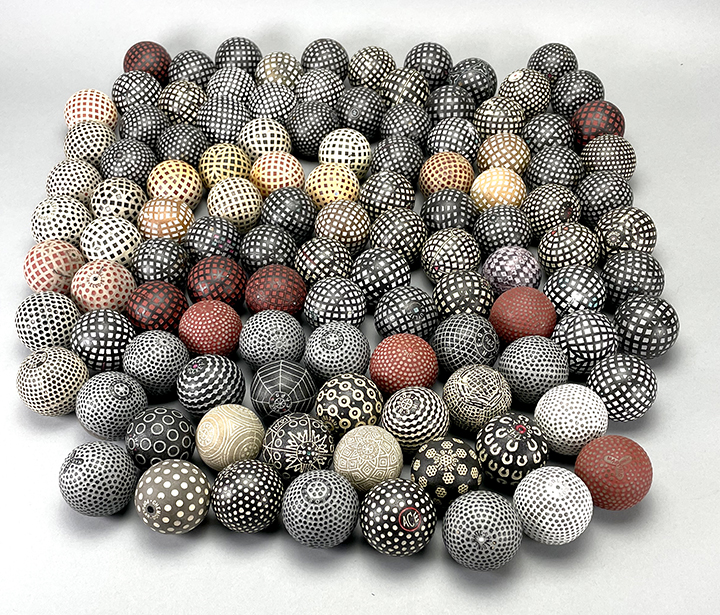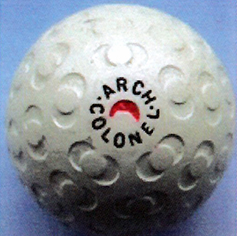Collecting Golf Balls:
Practice Balls, Ball Molds, Fakes & More


Eras of Golf Ball Collecting
Fake Golf Balls:
Clever Fakes Put Collectors Behind the Eight Ball
Antique golf expert Jeff Ellis is more blunt than Shakespeare in his language with regard to counterfeit golf balls which he says are a great harm to the collecting community. What are they and how to spot them? In this article and on his website, Ellis shares tips that will help you spot what’s real and what’s not in antique golf balls.
Eras of Golf Ball Collecting
Gutta Percha 1848-1902 Era
Discovered by chance as a useful substance for golf balls, gutta percha balls in their early years are highly desired by collectors. The early balls were smooth and flew erratically. Golfers then discovered that the scratches, dents and injuries delivered to these balls actually straightened their flight. Thus began decades of exploration in surface manipulation with grooves, dimples, pimples (called brambles), mesh, and any number of other patterns. Collectors of gutta percha balls rate them according to patterns, age, and, of course, condition. As with featheries, auction prices can be in the many thousands of dollars with prized samples going for quite breathtaking sums. Here, too, is the realm of the expert collector. The casual collector would do well to find second or third rate balls in less desirable condition to at least display for their historical value in the evolution of the ball.


Eras of Golf Ball Collecting
Early rubber Core – 1900-1920 Era
Around the turn of the 20th century, the golf ball took another leap forward with the invention of the wound, rubber core ball. Supplanting the gutty over a period of just a few years, the rubber core, or “bounding billy” as the early ball was known, took off, literally, with golfers who discovered its penchant for to add distance to their games. The early balls varied in size and weight. Core materials varied widely as inventors tried almost everything from a hollow core, to compressed air, honey, steel, a radioactive substance, and, in one bizarre instance, the pizzle (penis) of a bull! Yes, you read that right. Such were the many patterns, weights, cores, that collecting balls from this period involves much research to understand the many patents and varieties. It is a particularly rich period for collectors and balls can be found ranging from reasonable prices to very high for prized and rare patent balls.
